History of the BAA Comet Section
This history is taken from the BAA Memoirs: ‘The First Fifty Years’ and ‘The Second Fifty Years’.
Directors:
- 1891 – 1893 W F Denning
- 1893 – 1897 W E Plummer
- 1897 – 1901 Dr A C D Crommelin
- 1901 – 1907 E W Maunder
- 1907 – 1939 Dr A C D Crommelin
- 1939 – 1945 The Rev Dr M Davidson
- 1945 – 1958 Dr G Merton
- 1958 – 1968 M P Candy
- 1968 – 1977 S W Milbourn
- 1977 – 1987 M J Hendrie
- 1987 – 1990 G S Keitch
- 1990 – 2015 J D Shanklin
- 2015 – date N James
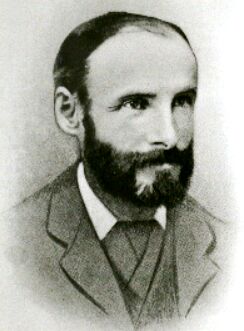 The Comet Section was founded in 1891 and W F Denning was appointed first Director. In the Journal, 1, 490, 1891 June, Denning sets forth the chief aims of the Section and it is interesting to notice that this comprised not only the discovery of new comets and nebulae, but also the recording of telescopic meteors. In the same Journal, p. 496, Denning published another communication with a title “A few Notes on Comet-Seeking”, which supplies useful hints on the nature of the telescope to use, the identification of a Comet, determination of its position, etc. In addition to the Director, three other members of the Association belonged to the Comet Section in the first year of its inception: these were David Booth, T L Flemming and W R Waugh. In the Report of the Cometary Section for the Session 1892-1893 the names of seven members are given with that of the Director, and it is announced that E Holmes had discovered a comet on 1892 November 6, close to the Great Nebula in Andromeda.
The Comet Section was founded in 1891 and W F Denning was appointed first Director. In the Journal, 1, 490, 1891 June, Denning sets forth the chief aims of the Section and it is interesting to notice that this comprised not only the discovery of new comets and nebulae, but also the recording of telescopic meteors. In the same Journal, p. 496, Denning published another communication with a title “A few Notes on Comet-Seeking”, which supplies useful hints on the nature of the telescope to use, the identification of a Comet, determination of its position, etc. In addition to the Director, three other members of the Association belonged to the Comet Section in the first year of its inception: these were David Booth, T L Flemming and W R Waugh. In the Report of the Cometary Section for the Session 1892-1893 the names of seven members are given with that of the Director, and it is announced that E Holmes had discovered a comet on 1892 November 6, close to the Great Nebula in Andromeda.
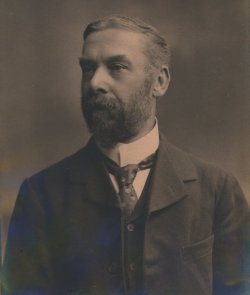 In 1893 Denning resigned owing to ill health (3, 472), and in October, W E Plummer, Director of the Liverpool Observatory was appointed Director of the Section (4, 35). Plummer held this post for four years until A C D Crommelin was appointed in 1897 October. Before his appointment Crommelin had made important contributions to the Journal on the computation of an ephemeris and also of an orbit of a comet. The first of these in JBAA, 6, 105, Session 1895-1896, was entitled, “On the Computation of a Comet’s Ephemeris.” Very full proofs are given for the various steps, and parabolic orbits only are dealt with. Formulae for computing the Gaussian constants are supplied and all the work is done by logarithms.
In 1893 Denning resigned owing to ill health (3, 472), and in October, W E Plummer, Director of the Liverpool Observatory was appointed Director of the Section (4, 35). Plummer held this post for four years until A C D Crommelin was appointed in 1897 October. Before his appointment Crommelin had made important contributions to the Journal on the computation of an ephemeris and also of an orbit of a comet. The first of these in JBAA, 6, 105, Session 1895-1896, was entitled, “On the Computation of a Comet’s Ephemeris.” Very full proofs are given for the various steps, and parabolic orbits only are dealt with. Formulae for computing the Gaussian constants are supplied and all the work is done by logarithms.
In Journal 1, 121, continued in 5, 260 and also in 6, 327, Crommelin has papers with the title, “On the Determination of the Orbit of a Comet or Planet from three Observations made at Intervals of a Few Days.” The author does not claim any originality for the method which, he admits, is based on a paper by Sir George Airy in Memoirs of the Royal Astronomical Society, 1839. The method seems rather lengthy compared with modern methods and it is doubtful if many amateurs in those days would have attempted to do the computation. It is fairly obvious that the computation of cometary orbits, and perhaps even of ephemerides then, was largely confined to the professional astronomer.
Crommelin’s first Address after his appointment as Director is contained in the Journal, 8, 70, 1897 November, and in this he sets forth the programme for members of this Section. This consists of sweeping for new comets or for those suspected of returning; observations to determine accurate positions; visual observations on the physical structure of comets – nucleus, coma, tail; photographic work; and finally, the computation of orbits and ephemerides. A number of members assisted with this programme, except the last part which was carried out almost entirely by the Director himself for many years.
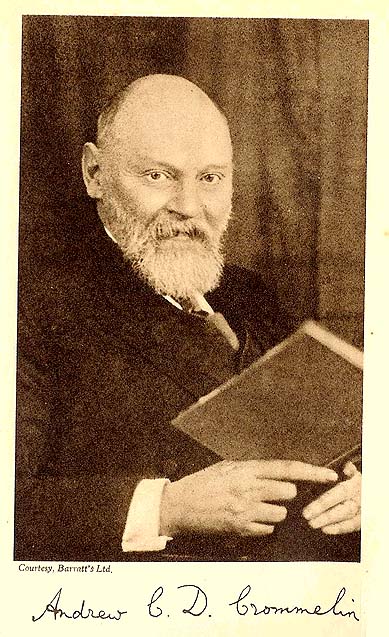
After his appointment as Director, Crommelin supplied regular notes on comets for the Journal, and in 9, 61, the first Interim Report was published. This dealt only with the observational results on Brook’s Comet – a fairly conspicuous object at that time. In 11, 21, there is a report of the observations of comet Borrelly-Brooks and it is interesting to notice that amongst those who contributed to the observational data were Phillips, J Ryle, and Smart. In 10, 213, there appeared “List of Comets Observed since the Beginning of 1889”.
The first Memoir of the Section was published in 1912, on Halley’s Comet, by Smart and Crommelin (Crommelin’s work on Halley’s Comet was followed by the well earned honour of DSc, Oxford). The Comet Memoir is comprised in 36 pages and gives a summary of the 1910 observations of Halley’s Comet, including its brightness, length of tail, spectrum, photographs, drawings, etc. The next Memoir, “Comet Catalogue”, contains the elements of the orbits of comets which had been observed from the beginning of 1894 to 1925 April, and also improved orbits of a number of earlier comets. This Memoir was produced in 1925 under the auspices of the International Astronomical Union and is a most useful compilation for any who are interested in comet work.
The computation of the perturbations of the planets on a Comet was scarcely a subject that would appeal to the amateur, though Smart did most valuable work in this branch, in particular with Halley’s Comet. When the Computing Section of the BAA was formed in 1920 a band of computers undertook a programme which would have seemed very formidable when the Association was formed, and this programme included the computation of perturbations. When Crommelin’s “Tables for the Computation of the Perturbations of Periodic Comets by the Planets” was published in 1928 the computations became considerably easier and the Computing Section has done most valuable work in relieving the Comet Section of this responsibility.
In 1931 our member P M Ryves discovered a comet, 1931 P1, which was specially notable for its very close approach to the Sun.
The last Memoir of the Comet Section was published in 1932, and this brought the 1925 Catalogue up to date. In addition, it contains a paper by Dr R T A Innes who discussed the problem of elliptical orbits, taking Comet Gale (1927 L1 = 34D) as an example of his method, which was carried out by means of a computing machine. He was convinced that it was sufficient to define the orbits of comets by three equations which determine the heliocentric co-ordinates in terms of the eccentricity and eccentric anomaly. This, of course, is true, and the orbit of a comet can be thus defined, rendering unnecessary the computation of the node, longitude of perihelion, inclination, etc; but for the identification of a comet these latter are preferable and the old method is still followed. J T Foxell also contributed to this Memoir a Table which gave log 1/r with argument r2. This table has proved very valuable in the computation of cometary perturbations. The present writer contributed two papers to the Memoir, the first of which, “The Determination of the Parabolic Orbit of a Comet”, was intended to bring the method of computation within the scope of the amateur who possessed a computing machine. The second, “A Method for Computing Approximate Elements in the Case of a General Orbit”, extended the method when longer time-intervals were available. This latter has been improved and modified since the publication of the Memoir (see MNRAS, 94, 1933 November; Journal, 44, 267, 1934 May; 45, 138, 1935 March). Cometary orbits are within the scope of the amateur, especially if he is equipped with a computing machine, and Kellaway and Sumner have done very valuable and accurate work in computing both parabolic and general orbits.
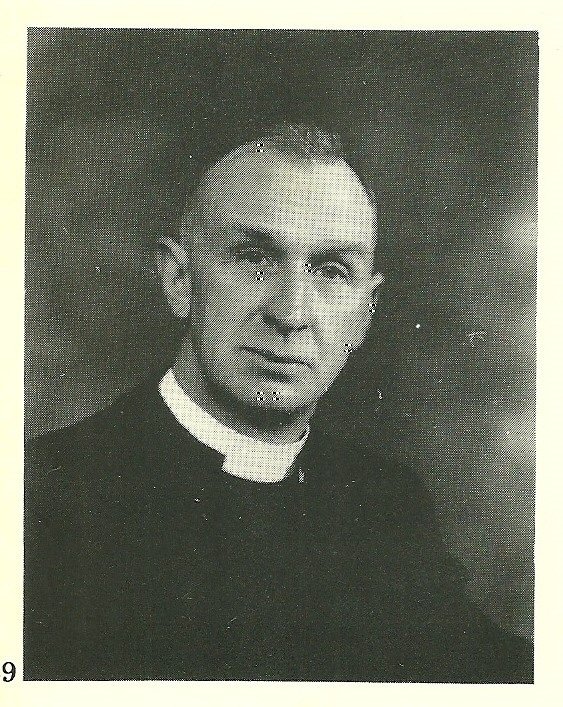
An important method for informing members of any new discoveries was started in 1923. Circulars were issued as soon as a discovery was announced and verified and the first Circular was issued by G Merton in February of that year. These Circulars have formed a very important part of the information conveyed to members and by far the greater portion of them is devoted to the discovery of new comets or the rediscovery of periodic comets, the perturbations of which have been computed. The issue of the Circulars was undertaken by Crommelin after Merton resigned this work in 1927, and in 1938 the present writer to it on.
With the death in 1939 of Dr A C D Crommelin, who had directed the Section since 1897, the Rev Dr Martin Davidson was appointed to succeed him. The United Kingdom was drawn into the Second World War in 1939 September and for the next six years almost everything was in short supply, many members were unable to devote any time to astronomy, and worldwide communications were severely disrupted. Davidson directed the Section from his parish in the target area of London’s dockland and produced reports on comets for the Journal and issued the Circulars. He was awarded the Walter Goodacre Medal in 1948.
Notable among naked eye comets observed during the War were Cunningham (1940 R2) which reached about 3rd magnitude, de Kock-Paraskevopoulos (1941 B2) best seen from lower latitudes where it reached at least 2nd magnitude, van Gent (1941 K1) for which W T Hay at Hendon secured valuable visual positions using the cross-bar micrometer he described in the Journal, 52, 29, and Comet Whipple-Fedtke-Tevadze (1942 X1) which passed through Ursa Major during 1943 February. Visible with the naked eye for three months and reaching 3rd magnitude it was extensively observed showing an active tail up to nine degrees long. Some members continued to observe comets during the War, aided by the country-wide blackout giving very dark skies, even in and around large towns. Among those active during this time were A F O’D Alexander, D A Campbell, W T Hay, P J Melotte, W L Shepherd, W H Stevenson and H P Wilkins.
G F Kellaway, who at this time was also Director of the Photographic Section, operated a 0.14-m aperture f/5 Zeiss triplet at West Coker, Somerset, with which he photographed comets for position measuring and reducing the plates himself, and often computing an orbit. He was successful in being an independent discoverer of Comet van Gent-Peltier-Daimaca (1943 W1), though a fourth name could not be attached to it. He also recovered Comet 33P/Daniel visually with his 0.32-m reflector and later photographed it extensively.
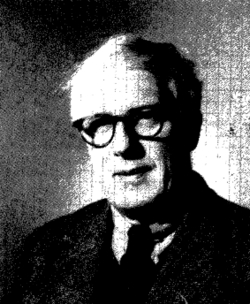 In 1945 Davidson retired and Dr Gerald Merton became Director of the Section and editor of the Circulars. He had inaugurated the Circulars in 1923 and produced them until 1927 when Crommelin took them on until in 1938 Davidson became editor. In those days the Circulars were the only source of information about new and returning comets available to most members.
In 1945 Davidson retired and Dr Gerald Merton became Director of the Section and editor of the Circulars. He had inaugurated the Circulars in 1923 and produced them until 1927 when Crommelin took them on until in 1938 Davidson became editor. In those days the Circulars were the only source of information about new and returning comets available to most members.
In 1945 June our member Albert F A L Jones of Timaru, New Zealand, made an independent recovery of 22P/Kopff and the next year on August 6 he discovered a ninth magnitude comet in Puppis. After conjunction with the Sun the following January Comet Jones (1946 P1) moved north and on March 2 was photographed at Oxford by Merton using two aircraft camera lenses of 0.5-m focal length working at f/5.6. Following the War years aerial reconnaissance lenses, some suitable for comet photography, became generally available at reasonable cost and over the next decade a number of observers took up this work. Mostly they used blue-sensitive photographic plates in preference to film as at the time these were faster for long exposure and could be bought in chemists’ shops quite cheaply.
With the return to peace, more members were able to observe and more fainter comets were observed: observation report forms were introduced to help standardise the method and reporting of observations, and annual Section Reports written for the Journal. Photographs were taken by D C Berry in New Zealand and W T Gayfer, W A Granger, F H Hooke, G Merton and R H Whittome. Among visual observers were F J Acfield, G E D Alcock, F M Bateson, P L Brown, M Davies-Sourfield, R T Glynn, F M Holborn, G E Taylor, R L Waterfield, J L White and H Wildey.
The dearth of really bright comets visible in northern latitudes continued through the forties but two were well seen from farther south. The Great Southern Comet (1947 X1) was first seen in Australia shortly after sunset on December 7 at about -3 magnitude and presented a 25 degree long fan tail in the still daylight sky. The following year a bright comet was discovered during the total solar eclipse of November 1, but the ‘Eclipse’ Comet (1948 V1) was also too far south to be well seen by observers in the British Isles.
1950 – 1959
The Annual Report (1951-52) of the Comet Section shows 28 visual observers and seven photographers observing eight comets, of which two just reached naked eye brightness, Wilson-Harrington (1951 P1) and 24P/Schaumasse. This second comet moved northwards through Lynx and Ursa Major during January and February and 140 observations were made by 24 observers.
The 1951 Presidential Address was made by the Director (‘Comets and their Origin’, Journal 62, 6) in which he reviewed our current knowledge of comets. The Address was timely because three important theories of the structure, behaviour and origin of comets were being developed, Whipple’s Icy-Conglomerate model of the nucleus, Biermann’s work on solar forces and plasma tails and Oort’s comet-cloud proposals described in his 1951 Halley Lecture.
Comet 12P/Pons-Brooks (1953 M1) returned after 71 years. Dr W H Steavenson observed it visually with his 0.76-m reflector at Cambridge in 1953 September when it was 13 – 14 magnitude. It passed near M31 in 1954 March – April reaching 6 magnitude but was poorly observed due to bad weather. In August of that year Comet Vozarova (1954 O1) was photographed by Dr R L Waterfield with his 0.15-m aperture f/4.5 Cooke triplet at Ascot, Berkshire and found to have a 20 arcminute long tail pointing towards the Sun.
The summer of 1955 was notable for many clear skies and three Comets Mrkos (1955 L1), Bakharev-Macfarlane-Krienke (1955 N1) and Honda (1955 O1) were for a time all visible in small telescope on the same night. Mrs G E Stone near Dorking, Surrey saw Mrkos with the naked eye in June. Comet Honda also just reached naked-eye brightness.
Two comets with longer periods returned in 1956, 13P/Olbers (1956 A1) (period 70 years) reaching about 6.5 magnitude as reported by A W and P H Vince at Amersham, Buckinghamshire and 27P/Crommelin (1956 S1) which was recovered by L Pajdusakova at the Skalnate Pleso Observatory and on the same night by M J Hendrie at Wescliff-on-Sea, Essex. Ten degrees from its predicted position the comet was 10 magnitude but only brightened another magnitude. Comet Crommelin had been renamed from Pons-Coggia-Winnecke-Forbes in honour of Crommelin’s work in linking the orbits of these apparitions and predicting the 1928 return.
On 1956 November 8 a 10 magnitude comet was discovered at the Uccle Observatory and it was soon apparent that it could become a bright object for southern observers during the first half of 1957 April and for northern observers later in the month. Observations by Waterfield and Steavenson soon after discovery showed the comet was already well developed and had a short tail. Comet Arend-Roland (1956 R1) became the first really bright comet many observers had seen, reaching zero magnitude and developing a 30 degree tail and a narrow anti-tail towards the Sun of about half that length. It aroused considerable popular interest in the press and a live radio broadcast was made from Waterfield’s observatory.
Comet Arend-Roland was followed by another bright comet, Mrkos (1957 P1). This time the comet was already 2 magnitude when first seen. It was independently found by two members C H Hare at Tamworth on August 3.1 and by W A Clark at Hull on August 4.1. It was then of 1.5 magnitude with a four degree tail in the bright twilight sky. It moved quickly into the evening sky where it showed a long plasma tail and a shorter curved dust tail. Nearly a thousand observations were made by members of these two bright comets.
Early in 1958 Merton resigned from the Directorship of the Section and Michael P Candy of the Royal Greenwich Observatory, who was already Assistant to the Director, was appointed to succeed him.
Efforts to improve the accuracy of visual observations were hampered by the lack of suitable atlases and catalogues. Old copies of Webb’s, the rare BD charts and the Beyer Graff Charts were in the hands of a few observers, but except in the case of the BD, there was no corresponding catalogue from which to obtain magnitudes. Most observers had to draw field sketches of stars, showing stars used for magnitude comparison, and send these to the Director for analysis. This involved the Director in a great deal of work even when the identifications were unambiguous, which was not always the case.
The situation for those few members able to take photographs on a sufficient scale to provide precise positions, within two or three arcseconds, was also very difficult. It was difficult to obtain the use of a suitable measuring machine outside professional observatories and star positions had to be obtained from an assortment of catalogues covering different bands of declination. Despite these problems, a few members managed astrometric work on comets at home, in particular Waterfield refurbished an old machine and in 1956 started to measure his plates, continuing for nearly 30 years.
The prompt calculation of the orbits of new comets undertaken by Merton was continued by Candy and he, B G Marsden, C Dinwoodie and M G Sumner continued improving the orbits of periodic comets.
Several members had carried on the arduous work of sweeping for new comets but without success until on the evening of 1959 August 25 George E D Alcock discovered a new comet from his home near Peterborough. An experienced comet and meteor observer for many years, Alcock had spent 646 hours on 560 nights sweeping for comets before this 10 magnitude object was discovered. More remarkable still he discovered a second comet five days later; they were 1959 Q1 and 1959 Q2 respectively, but 1959 Q1 faded more quickly than expected and 1959 Q2 was not seen again after perihelion. No comet had been discovered from the UK since Denning’s last discovery in 1894; Denning was the Section’s first Director.
1960 – 1969
Discovered in 1959, Comet Burnham (1959 Y1) just became a naked eye object in 1960 April and was notable for its very long and narrow plasma tail. A new comet of 8th magnitude was discovered on December 26 by M P Candy while testing an eyepiece with a 0.13-m comet-seeker. Comet Candy (1960 Y1) was in Cepheus but moved quickly southwards and faded. During 1961 the first Merlin Medal was awarded to Alcock for his observational work on comets and two recent discoveries.
The ‘Catalogue of Cometary Orbits’ was published in 1960 by the Computing Section as was the 1965 Supplementary Catalogue. Both were compiled and edited by Dr J G Porter with special assistance from Dr B G Marsden who became responsible for subsequent compilations of the Catalogue which have since been published every few years under the auspices of the IAU. These cometary catalogues have all been of great value to the Comet Section.
M J Hendrie examined the circumstances of all comet discoveries over 1948 – 1960 in a paper in the Journal (72, 384, ‘An Analysis of Comet Discoveries’). Dr Edgar Everhart of Denver, Colorado, who joined the Association in 1967, wrote a series of papers (published elsewhere) exploring this subject in detail, presenting the actual circumstances from a larger sample, theoretical considerations and the use of very large numbers of computer-generated comet orbits. In 1963 the Walter Goodacre Medal and Gift was awarded to G Merton in recognition of his contribution to the study of comets and his services to astronomy.
On 1963 March 19 Alcock discovered his third comet, an 8th magnitude object, strongly condensed, near delta Cygni. It was confirmed the same morning by Candy and became 1963 F1. Comet Ikeya (1963 A1) was a bright comet showing a 20-degree tail to southern hemisphere observers though it was poorly placed as it moved north but was observed by some members. Another bright southern hemisphere comet was Pereyra (1963 R1). Everhart discovered 1964 P1 and was joint discoverer of Ikeya-Everhart 1966 R1. Accurate positions of 1964 P1 and other comets were obtained by Waterfield at Silwood Park near Ascot and D S Brown of Newcastle-on-Tyne. Brown described in the Journal a plate-measuring machine he had constructed (72, 3).
Two useful contributions appeared in the Journal, from Peter Lancaster Brown (‘A Review of the Current Theories of the Origin and Formation of Comets’, 75, 17) and from Keith B Hindley (‘On the Discovery of New Comets by Amateurs’, 75, 206).
The problem of identifying stars and non-stellar objects in particular was eased with the publication by A Becvar at the Skalnate Pleso Observatory of several new atlases. The Atlas Coeli and Katalog covered stars to 6.3 magnitude and galaxies to 12 magnitude, while the larger scale Atlas Borealis, Atlas Eclipticalis and Atlas Australis included stars fainter than 9 magnitude. Of special value to photographers doing astrometric work was the publication in 1966 of the Smithsonian Astrophysical Observatory’s Star Atlas and Catalogues covering the whole sky to 9 magnitude. The catalogue included proper motions and enabled photographs to be reduced using a single up-to-date source of star positions.
The discovery of an 8th magnitude comet by Ikeya and Seki during 1965 September added another member to the Kreutz family of Sun-grazing comets, which includes 1880 C1, 1882 R2, and Pereyra (1963 R1). Comet Ikeya-Seki (1965 S1) became a brilliant daylight comet, probably as bright as any comet for which reliable data exists (-10 magnitude). It showed a long tail, but was best seen from lower latitudes: Alan McClure obtained splendid photographs of this and other comets from the Californian mountains.
G Alcock found his fourth comet on September 26: Comet 1965 S2 was 10 magnitude at discovery. During the mid-Sixties comet-seeking was undertaken by Alcock, Bennett, Lancaster-Brown, Candy, Hindley, D R Hutchinson, T J Jones, Milbourn and Mrs Stone.
Another object of special interest was the Leonid Comet, 55P/Tempel-Tuttle (period 33 years), not seen since 1866. Because the time of its return was uncertain Hendrie, at Wormingford near Colchester, used a wide-angle lens covering 1200 square degrees to photograph the areas through which it should pass, continuing over several years. An ephemeris by Marsden based on a range of perihelion dates was used. However, the comet was eventually recovered in 1965 June (1965 M2) at the Boyden Station as a result of a new prediction by J Schubart using an observation by Kirch in 1699, which enabled the comet’s position along the orbit to be quite accurately determined.
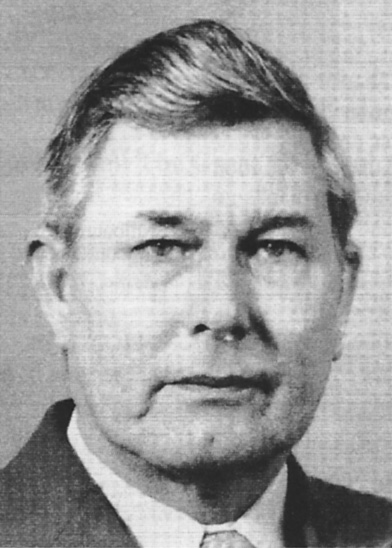
About this time astrometric work was being undertaken by D S Brown, K Fea, B Warner and Waterfield. Milbourn measured plates taken by Dr H Soper, Isle of Man.
The 1964 Merlin Medal was awarded to B G Marsden for his extensive work on comet orbits. The Walter Goodacre Medal was awarded to Dr Waterfield in 1966 for his work on comets and literary contributions to astronomy. Alcock received the RAS Jackson-Gwilt Medal for his comet and meteor work in 1963.
In 1967 Candy resigned from the Directorship on his move to Australia and Stanley W Milbourn was appointed to succeed him. Milbourn was an observer and had worked extensively on comet orbits for many years. In 1969 M Davidson died at the age of 88.
Two bright comets were discovered towards the end of 1969, Tago-Sato-Kosaka (1969 T1) was at its best in the southern hemisphere reaching 3 magnitude and showing an active plasma tail. It became an evening object to northern observers the following January and was widely observed. Comet Bennett (1969 Y1) was found by member Jack C Bennett of Pretoria on December 28 and moved north to become the best-observed comet for many years, reaching zero magnitude and showing a broad curved tail up to 30 degrees long.
1970 – 1979
In 1973 the first Comet Section Bulletin was published by Milbourn under the editorship of Andrew P Stephens. This continued until 1978 when Hendrie became editor. In all 26 Bulletins were issued until 1987 at a frequency of about two per year.
Comet Kohoutek (1973 E1) failed to live up to initial expectations but developed into a bright naked eye comet showing a full range of cometary activity. Only low altitude and poor weather in the early part of 1974 spoilt a good apparition. Some members beat the weather by taking one of two special flights to view the comet in January, the first from Manchester was accompanied by P B Doherty and the second from Gatwick by P A Moore and the Director. Good views of the comet were obtained from 7300 metres. Some 600 visual observations were sent in by Section members and many photographs. Comet Kohoutek was observed by US astronauts aboard Skylab, where a sunward tail was seen, the comet reaching about -3 magnitude as it passed close to the Sun.
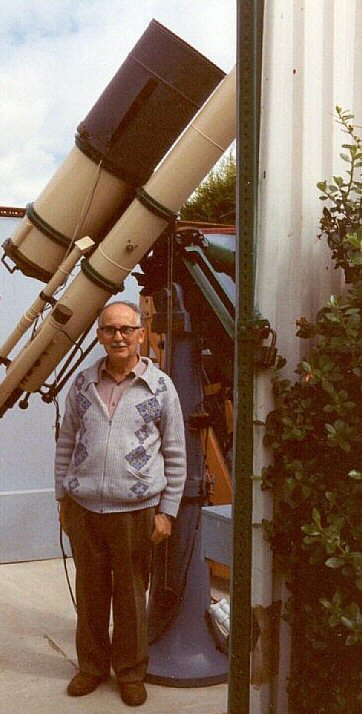 J C Bennet discovered his second comet in 1974 (1974 V2). Comet Kobayashi-Berger-Milon (1975 N1) provided observers with a well-placed object during the summer of 1975 and just reached 4 magnitude showing several degrees of tail. Comet West (1975 V1) gave a spectacular display in 1976 March and showed a striated fan tail and later the nucleus split into four components. In 1978 Australian member David A Seargent discovered Comet 1978 T1.
J C Bennet discovered his second comet in 1974 (1974 V2). Comet Kobayashi-Berger-Milon (1975 N1) provided observers with a well-placed object during the summer of 1975 and just reached 4 magnitude showing several degrees of tail. Comet West (1975 V1) gave a spectacular display in 1976 March and showed a striated fan tail and later the nucleus split into four components. In 1978 Australian member David A Seargent discovered Comet 1978 T1.
The Merlin Medal was awarded to J C Bennett in 1971 for his two comet discoveries. G Alcock was awarded the Merlin Medal for the second time in 1972 and the Walter Goodacre Medal in 1976, and an MBE in 1979. The Merlin Medal was also awarded to M P Candy in 1975 for his comet discovery and to Harold B Ridley in 1976 for his photography of 433 Eros and his photographic work on comets. The Goodacre Medal was awarded to Brian G Marsden in 1979.
A F A L Jones continued as Assistant to the Director under Milbourn and H B Ridley became Secretary to the Section in 1971. Michael J Hendrie was appointed Deputy Director in 1976 October and became Director in 1977 following the resignation of Milbourn. It was decided that Milbourn would continue as Editor of the Association’s Circulars, as a separate function outside the Comet Section. The proportion of non-comet news had greatly increased since Merton’s and Candy’s time. Milbourn agreed to deal with computing matters within the Section and produce the Bulletin while P B Doherty became an Assistant to the Director in 1978.
At the Out-of London meeting in the summer of 1977 Ridley spoke on ‘Comet Discoveries’ and he chose ‘Comets’ for his 1978 Presidential Address (Journal, 88, 226). During the Seventies R J Buckley published a series of papers in the Journal on the orbits of periodic and nineteenth century comets, under the auspices of the Computing Section.
In 1978 ‘The International Comet Quarterly’ was organised to receive, store on a computer file and publish visual comet magnitude and physical data, under the editorship of Daniel W E Green. It was set up with the support of Dr Brian Marsden, Director of the Central Bureau for Astronomical Telegrams in Cambridge, Mass, USA. The Section made arrangements to send copies of observations to the editors.
1980 – 1989
On Christmas evening 1980 Roy W Panther discovered a new comet, 1980 Y2, in Lyra after hundreds of hours of sweeping. It was confirmed within the hour by Alcock and Hendrie. A photograph of Comet Austin (1982 M1) by Ridley appeared on the Journal’s first pictorial cover. During 1983 the IRAS satellite began discovering comets: 1983 H1 was discovered independently by Araki in Japan and Alcock, his fifth comet. Alcock’s discovery was confirmed the same night by Guy M Hurst and Panther. This comet was of exceptional interest because of its very close approach to the Earth, only 5 million km, and passed near the zenith crossing the evening sky from east to west within about a week. At its brightest, the three degree coma of 2 mag contained a starlike nucleus which in the telescope could be seen to be moving past filed stars. To the naked eye it appeared as a small circular cloud of low surface brightness. It was a very difficult object to photograph because of its rapid motion, but several observers overcame this: Ridley’s fine photograph on 1983 May 10 was reproduced in the Journal.
With the very high cost of photographic plates, only obtainable to order from Kodak in the USA, many observers turned to cut film. The thicker base and smaller grain without loss of speed made it suitable for astrometry also. The technique of gas-hypersensitising was employed using the very fine grain 2415 and Kodak TMAX 400 gave comparable performance without hypering to the special Kodak 103a-O and 103a-F plates but with better grain.
Several members undertook astrometry of Halley and other comets, P Birtwhistle had for several years used the University of London machine at Mill Hill to measure some of Waterfield’s plates. Everhart built a fine measuring machine, described in the 1982 September Sky and Telescope. Hendrie built a machine about the same time using commercial micrometer heads while B G Manning, who had for many years used a machine at the University of Birmingham, built his own and designed a digital readout for Hendrie’s machine. D G Buczynski obtained the use at home of a machine from Lancashire Polytechnic, A D Young made use of Waterfield’s machine following Waterfield’s death in 1986 while in 1987 the Association was able to purchase a Zeiss measuring engine which was lent to Ridley. Thus there was now a sizeable group of observers able to photograph, measure and reduce, using the now readily available personal microcomputers, comets and other objects within their own homes. In addition Jonathan D Shanklin, who used the Cambridge Observatories’ 0.43-m Schmidt and measuring facilities for astrometry during the Halley apparition, was able to continue this work on subsequent comets.
The position for visual observers also improved with a new AAVSO Variable Star Atlas in 1980, based on the SAO Atlas but with magnitudes added to some stars, and several Tirion atlases. The Sky Catalogues 2000.0 of stars and non-stellar objects largely replaced Becvar’s Katalog of 20 years before. While telescopes had not changed fundamentally, binoculars had improved and lighter coated instruments proved ideal for the brighter comets, faint tails and magnitude estimates. The comet observer of the Eighties could acquire suitable charts, catalogues and equipment much more easily than his counterpart in the Forties and Fifties.
Halley’s Comet was observed over 1985-1987. It was first observed in the UK on 1985 August 15 when A D Young and R W Arbour independently photographed it [J D Shanklin observed it visually the same night – JDS]: IHW Co-ordinator Stephen Edberg and member Charles S Morris observed it visually from the Californian mountains during August. By mid-November it was just of naked-eye brightness but for most UK observers it remained a binocular object. After closing with the Sun in 1986 January it was observed from southern latitudes in March and April when it was a bright naked eye object with a significant tail: however it was one of the least favourable apparitions for a spectacular show though the period of naked eye visibility was quite long, so most serious observers were well pleased. The year 1987 was a record for comets, 33 being discovered or recovered during the year. One of these was Comet McNaught 1987 U3, discovered by Robert A McNaught a member working on satellite tracking in Australia. This was the twelfth new comet discovered by a current BAA member during the fifty-year period of this history, seven of which were discovered from England.
In 1980 the Merlin Medal was awarded to S W Milbourn and in 1981 to R W Panther. Gerald Merton died in 1983 after a long illness, aged 90. Section meetings were held in London in 1982 April and Crawley in 1985 April, this second to discuss plans for Halley’s Comet. With increasing interest in comets occasioned by the approach of Halley’s Comet several papers were published in the Journal including ‘Visual Comet Photometry’ by G S Keitch (Journal, 93, 200), ‘The Photography of Comets’ by H B Ridley (95, 8), and several reports on plans for and results of the Halley apparition by Keitch, Hendrie and Ridley. The 1985 December BAA Public Lecture by David Hughes was on the subject of Halley’s Comet.
A new Comet Section was set up by the BAA New South Wales Branch in 1982, with D A J Seargent as Director. Seargent also directed the independent Australian Comet Section with which the Section exchanged publications and observations. In 1983 David Keedy offered an annual monetary award for the member who had made an outstanding contribution to the Section’s work. Ridley introduced his look forward to the coming year’s returning comets into the Bulletin and G J Hodgkinson continued his notes from other Journals.
The BAA was first asked for its views on observing Halley in 1980 by the study group which became the International Halley Watch (IHW) and it provided some input for the IHW Amateur Observers’ Handbook. The Comet Section agreed to act to encourage members to provide the IHW with observations in specific categories through the Section and to act as a clearing house for non-BAA UK observes who wished to take part in the IHW programme: the Director was appointed IHW UK Correspondent (amateur observations). G S Keitch co-ordinated the visual and H B Ridley the photographic observations of Halley. With The Astronomer magazine it also provided a ‘Real Time’ reporting facility. The Comet Section Director was invited to join the Comet Halley UK Coordinating Committee (CHUKCC), set up to encourage cooperation and planning between UK-based astronomers. D W Hughes and J D Shanklin also served on the committee in their professional capacities. The comet Section was given access to Starlink, and photographic plates were provided for those undertaking astrometric observations.
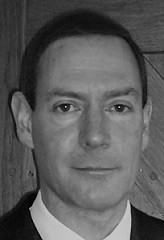 Much information was passed to the IHW for their Archive by the Section, mostly on visual magnitude estimates, wide-field photography and photographic astrometry. Astrometric results were utilised by the IHW Astrometry Network to help update the orbit of the comet for spacecraft encounters in 1986 March [the last pre-perihelion observations of the comet were made from Cambridge – JDS] and for professional narrow field observations. The Section also provided results to the CHUKCC Archive and made available display material for exhibitions on Halley’s Comet at the Royal Society, Royal Institution and elsewhere: P C Stanley assisted with this work. Several Section members attended international meetings on Halley in the Federal Republic of Germany, Belgium and the UK. The Comet Section was also represented by the Director on the National Astronomy Week 1985 committee, which had Halley’s Comet as the theme.
Much information was passed to the IHW for their Archive by the Section, mostly on visual magnitude estimates, wide-field photography and photographic astrometry. Astrometric results were utilised by the IHW Astrometry Network to help update the orbit of the comet for spacecraft encounters in 1986 March [the last pre-perihelion observations of the comet were made from Cambridge – JDS] and for professional narrow field observations. The Section also provided results to the CHUKCC Archive and made available display material for exhibitions on Halley’s Comet at the Royal Society, Royal Institution and elsewhere: P C Stanley assisted with this work. Several Section members attended international meetings on Halley in the Federal Republic of Germany, Belgium and the UK. The Comet Section was also represented by the Director on the National Astronomy Week 1985 committee, which had Halley’s Comet as the theme.
Late in 1987 Hendrie resigned from the Directorship of the Section. Graham S Keitch, who had been Assistant Director for the previous year, was appointed to the Directorship. A Comet Section Memoir ‘Halley’s Comet – The 1986 Apparition’ was prepared by Hendrie for publication. This contained a full report of the Association’s involvement in the 1986 apparition and the analysis of members’ observations.
A Newsletter containing current information on comets was introduced, and a joint meeting with other Sections on Comets, Meteors and Minor Planets held in Cambridge in 1989 February was well attended. Two comets just reached naked eye brightness in the period 1989 September to November, 23P/Brorsen-Metcalf (1989 N1) and Okazaki-Levy-Rudenko (1989 Q1). Comet Aarseth-Brewington (1989 W1) moved south to reach 3rd magnitude in December.
1990 – 1999
Comet Levy (1990 K1) was a 3rd magnitude northern comet in the summer of 1990. All were well observed and photographed by Buczynski, Manning, Ridley and others. Jonathan Shanklin succeeded Keitch as Director in 1990
2000 – 2009
2009 – date
https://britastro.org/wp-content/uploads/2015/11/mike-candy.JPG
| The British Astronomical Association supports amateur astronomers around the UK and the rest of the world. Find out more about the BAA or join us. |
